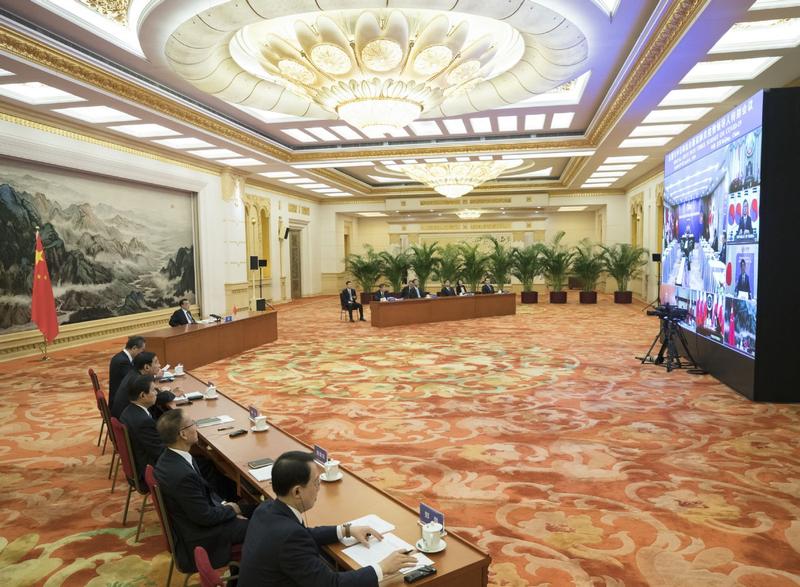 Premier Li Keqiang attends a special summit of the Association of Southeast Asian Nations, China, Japan and the Republic of Korea (ASEAN Plus Three countries or 10+3) on COVID-19 via video link in Beijing, capital of China, April 14, 2020. (PHOTO / XINHUA)
Premier Li Keqiang attends a special summit of the Association of Southeast Asian Nations, China, Japan and the Republic of Korea (ASEAN Plus Three countries or 10+3) on COVID-19 via video link in Beijing, capital of China, April 14, 2020. (PHOTO / XINHUA)
The "10+3" cooperation mechanism — which brings together the 10 members of the Association of Southeast Asian Nations, China, Japan and the Republic of Korea — was established after the shock of the 1997 Asian financial crisis and it has proved to be an effective and fruitful cooperation platform.
READ MORE: China, ASEAN pledge joint efforts to contain coronavirus
Its importance was highlighted again on Tuesday when leaders of the 13 countries held a special videoconference on the COVID-19 pandemic, in which they displayed the shared resolve to safeguard people’s health and safety and maintain regional economic development.
The solidarity the 13 countries have displayed and the mutual assistance they have offered one another during the pandemic have been in stark contrast to the name-calling and stigmatism staged by some Western countries, and explain why they have been able to so quickly bring their domestic outbreaks under control
Through the rigorous implementation of prevention and control measures, China, the ROK, Japan and some ASEAN members, such as Singapore and Thailand, all of which were among the first countries to be affected by the novel coronavirus outbreak, have largely brought their domestic epidemic situations under control.
As such, as well as exchanging views on the pandemic situation in the region, the leaders were also able to discuss ways to promote regional trade exchanges. If the countries can effectively prevent cross-border transmission of the virus among them, which is fully attainable with enhanced cooperation on surveillance, prevention, detection and control, they will be able to focus on their economic and trade relations that have been hobbled by the pandemic, and restore the flow of goods in the regional supply chains.
With a total population of 2.23 billion, 31 percent of the world’s total, the 10+3 bloc’s effective control of the pandemic is already a big contribution to the world, but with a combined economy of more than US$21 trillion, which accounts for 24 percent of the global economy, the collective recovery of their economies would not only shore up confidence that the region does have a handle on the pandemic but also give a shot in the arm to the global economy, helping to accumulate positive momentum for its early recovery.
The solidarity the 13 countries have displayed and the mutual assistance they have offered one another during the pandemic have been in stark contrast to the name-calling and stigmatism staged by some Western countries, and explain why they have been able to so quickly bring their domestic outbreaks under control. In fact, the pandemic has demonstrated the need for them to weave their cooperation network tighter.
ALSO READ: Li stresses joint efforts for early victory against COVID-19
With their prevention and control experiences shared, cooperation strengthened and policymaking coordinated, it is to be hoped that the discussions among these leaders, which touched upon almost all the foreseeable aspects related to pandemic control and the economy, will consolidate the achievements that have been made in combating the pandemic and spur economic activities in the region.


